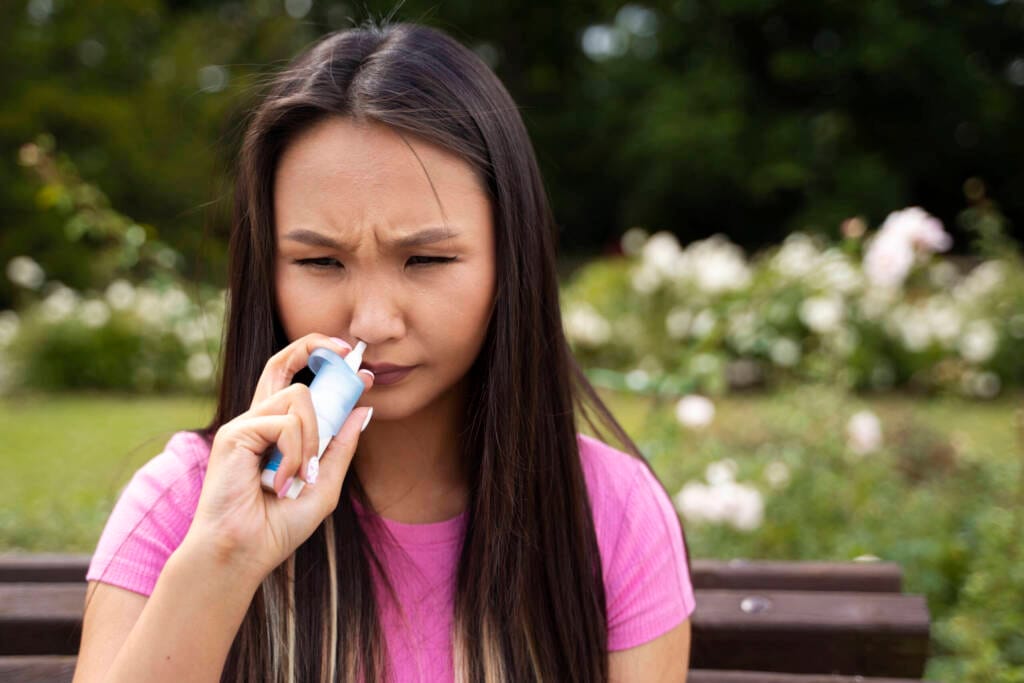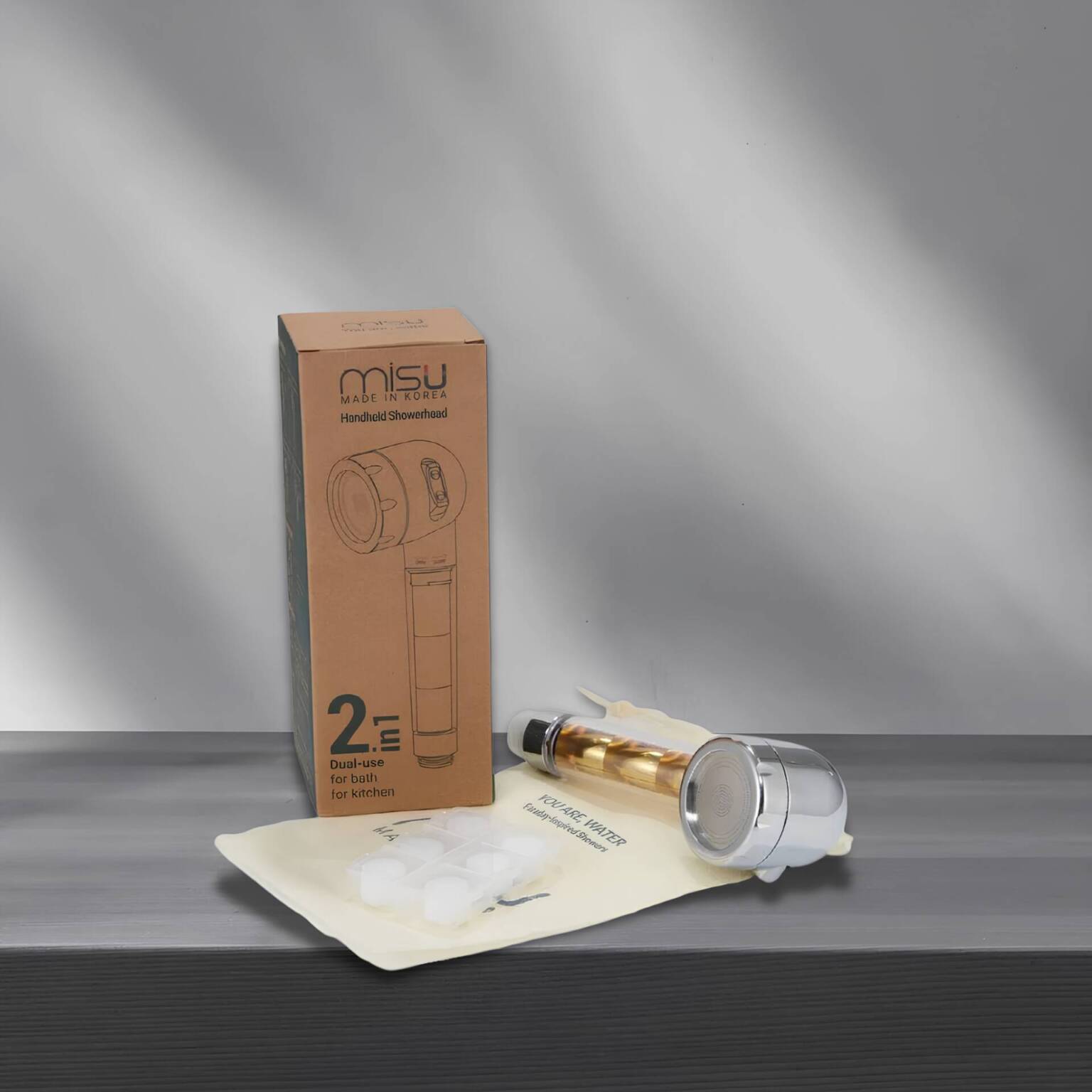A llergic asthma affects breathing and can be triggered by pollen and dust mites. Learn about the symptoms, causes, and effective measures to control the attacks.
Allergic asthma is a respiratory condition characterised by chronic inflammation of the pulmonary airways and defined by the presence of significant respiratory symptoms, conditioned by bronchial hyperreactivity to various common allergen stimuli that are harmless to the majority of the population.
Clinically, it presents as recurrent episodes of ‘shortness of breath’, wheezing, chest tightness, or coughing. The intensity of the symptoms varies: they can be mild, moderate, or severe. Quality of life will be affected to varying degrees, depending on the intensity and frequency of the episodes.
It is important to recognise the symptoms of allergic asthma to avoid, minimise, and manage attacks efficiently.
What is Allergic Asthma?
What is Allergic Asthma? This is a type of asthma in which there is an ‘allergic’ response to certain substances in the air. There are other types of asthma triggered by different types of stimuli, such as: physical exercise; emotional sensitivity; reactivity to medication; triggered by viruses; cold air, among others.


The etiology (genesis) of allergic asthma is identical to that of allergic rhinitis. In both cases, episodes of exacerbation are triggered by a response to airborne allergens. However, it is identified that respiratory hyperreactivity to allergens is conditioned or aggravated by the continuous accumulation of “non-friendly” substances in our bodies, causing overload on the immune system, which then becomes hyper-reactive. The prevalence of allergic asthma has been increasing, alongside the rise in chemicals present in outdoor air, but mainly in the air inside our homes and in unnatural foods with a growing volume of incorporated chemicals (pesticides, hormones, antibiotics, flavorings, preservatives, sugar substitutes, etc.).
The most common allergens are:
1) Present in outdoor air: pollens, atmospheric pollutants (from traffic, industrial areas, chemtrails, and fires);
2) Present in indoor air: fungal and mold spores (in damp and warm environments with insufficient air renewal); dust and biological particles (dust mite excrement, insect residues); pet hair and skin flakes; household chemicals (tobacco, detergents, air fresheners, house and furniture coatings, among others).


In an asthma attack, the diameter of the bronchioles (small-caliber airways) decreases due to hyperreactivity to “irritating” stimuli to the respiratory mucosa, causing: spasms (contraction) of the small muscles surrounding the bronchioles; hypersecretion of mucus and edema of the bronchial mucosa; which together make it harder for air to pass through, leading to the sensation of “shortness of breath” and chest pain.
Continuous exposure to allergens can worsen the inflammation, making it chronic and leading to structural damage followed by remodeling of the airways, which progressively become more susceptible to attacks.
Since the allergic profile varies from person to person, it is important to have an accurate diagnosis and a preventive and therapeutic plan tailored to each case. This may require follow-up with an allergist, specialized in the effective management of different types of allergic asthma.
Symptoms of Allergic Asthma
The main symptoms of allergic asthma are: wheezing (whistling sound in the chest), difficulty breathing (feeling of shortness of breath), tightness or pain in the chest, and persistent dry cough.
Asthma can be classified as intermittent or persistent, with the latter being mild, moderate, or severe, depending on the intensity and/or frequency of symptoms. In some cases, allergic asthma changes from intermittent to persistent. In mild cases of allergic asthma, wheezing and coughing occur sporadically and have little impact on daily life. In moderate cases, difficulty breathing is more pronounced, and it may affect daily activities and disrupt sleep. In patients with more severe cases, dyspnoea (shortness of breath) becomes intense and/or persistent, and asthma attacks may occur, requiring urgent medical intervention.



Diagnosis of Allergic Asthma
The diagnosis of allergic asthma requires evaluation by a specialist doctor because there is significant variability in the conditions and factors influencing each clinical case. The diagnosis is essentially clinical, based on the identification of typical allergic asthma symptoms (shortness of breath, wheezing, coughing, or chest tightness) and the frequency and intensity of their occurrence.
The diagnosis is supported by results obtained from respiratory function tests (spirometry and others), which assess lung function and identify existing limitations in respiratory airflow. Provocative tests (tests using allergens) are also used to identify specific triggers that trigger symptoms. Tests with bronchodilator medications are also used to evaluate the degree of response to treatment.
To ensure appropriate and effective treatment, it is essential to differentiate allergic asthma from other respiratory diseases, such as chronic bronchitis (clinical conditions persisting over months or years, with productive cough, i.e., expectoration) and Chronic Obstructive Pulmonary Disease (COPD) – often of an occupational nature (exposure to dust and industrial toxins), where “shortness of breath” progressively worsens, without the possibility of responding favourably to treatment.
Treatments for Allergic Asthma
Despite significant improvements in recent decades, the treatment of allergic asthma remains challenging. Optimal asthma control requires appropriate pharmacological interventions, adapted to the clinical context and the individual needs and characteristics of each patient, as well as the implementation of measures to prevent flare-ups.
What to take for allergic asthma?
There are various therapeutic options available for controlling asthma, classified according to levels of clinical severity. The drugs used to treat asthma are divided into two classes:
1) control drugs: used to reduce inflammation, control symptoms and reduce the future risk of exacerbations and decline in lung function;
2) relief drugs: for relieving symptoms during flare-ups or when asthma worsens.



The most commonly used medications are bronchodilators and inhaled corticosteroids, which are essential for relieving symptoms and controlling inflammation of the airways. To help control the reactivity of the immune system, anti-inflammatory and antihistamine medications are used.
Similar to allergic rhinitis, immunotherapy is a long-term treatment option, consisting of “allergy vaccines” for specific allergens, which help to gradually reduce sensitivity to the allergens.
When an acute asthma attack occurs, it is essential to act quickly. A bronchodilator is used to relieve the temporary shortness of breath, but if the attack persists or worsens, medical emergency services should be contacted.
Regular medical follow-up is essential to ensure the maintenance of symptom control, preservation of lung function, and detection of any adverse effects related to treatment. For the success of the therapeutic plan, an educational component is crucial to encourage asthma patients to adhere to their treatment and to teach the correct inhalation technique.
Prevention of Allergic Asthma
There is a close relationship between allergic asthma and allergic rhinitis – around 80% of patients with allergic asthma also have allergic rhinitis, and on the other hand, it is estimated that 30% to 40% of individuals with allergic rhinitis may develop allergic asthma over their lifetime. Therefore, some preventive measures are common to both conditions.
The measures to control allergic asthma are preventive actions guided according to the established medical diagnosis, on a case-by-case basis. In general terms, they focus on reducing exposure to triggers that cause attacks and strengthening respiratory health. There are two key groups of preventive measures:
- Respiratory Measures – reduce contact with allergenic agents: ensure adequate ventilation of indoor spaces; correct humidity levels and eliminate mold and fungi; frequent cleaning of the home and bedding to reduce dust mites and dust, and reduction or removal of materials that accumulate them (curtains, carpets, fabric-covered cushions and sofas); keeping pets away; use of certified indoor air purifiers (HEPA) to remove all particles and microorganisms from the air. In the case of pollen sensitivity: keep windows closed during pollen seasons and schedule outings based on available pollen reports on the web. In cases of occupational asthma: adopt occupational mitigation and protection measures.
- Dietary and Digestive Measures to maintain good intestinal immune health – see the corresponding section of the article “ALLERGIC RHINITIS.”


Alongside preventive measures, it is important to strengthen the lungs and improve respiratory capacity through regular physical exercise (walking, swimming, cycling), as long as it is done in a moderate and supervised manner, as intense physical activities may trigger symptoms. Adopting these practices helps control allergic asthma, reducing the frequency of attacks, improving quality of life, lowering the risk of complications, and, therefore, improving the prognosis of asthma progression.
Conclusion
The identification of allergic asthma symptoms and regular medical monitoring are essential for preventing attacks and complications. Additionally, it is crucial to adopt preventive measures, such as avoiding allergens, and to “strengthen the lungs” through appropriate physical exercise – both measures can significantly improve the progression of the condition.
If you identify symptoms of allergic asthma, consult a specialist to start a personalized treatment or to rule out other respiratory disorders.
In allergic asthma, it has been proven that using a certified air purifier (HEPA) at home has an extraordinary impact on significantly controlling symptoms and reducing attacks, promoting lung health and, therefore, positively influencing quality of life, preventing acute attacks, and drastically reducing the appearance of symptoms. A natural diet maintains gut health and the immunity that depends on it.
Knowledge and access to reliable information are valuable, so explore other articles to choose how to improve your respiratory health and live more comfortably.
The first phenomenon of life is breathing, so take care of your respiratory health!
Bibliografia Consultada
- Guia Prático de Gestão da Asma nos Cuidados de Saúde Primários: https://apmgf.pt/wp-content/uploads/2021/05/Guia_Asma_15x21_interac.pdf
- Padem N, Saltoun C. Classification of asthma. Allergy Asthma Proc. 2019 Nov 1;40(6):385-388. doi: 10.2500/aap.2019.40.4253. PMID: 31690376.
- Schatz M, Rosenwasser L. The allergic asthma phenotype. J Allergy Clin Immunol Pract. 2014 Nov-Dec; 2(6):645-8; quiz 649. doi: 10.1016/j.jaip.2014.09.004. Epub 2014 Nov 6. PMID: 25439351.
- Nappi E, Paoletti G, Malvezzi L, Ferri S, Racca F, Messina MR, Puggioni F, Heffler E, Canonica GW. Comorbid allergic rhinitis and asthma: important clinical considerations. Expert Rev Clin Immunol. 2022 Jul;18(7):747-758. doi: 10.1080/1744666X.2022.2089654. Epub 2022 Jun 19. PMID: 35695326.
- Finotto S. Resolution of allergic asthma. Semin Immunopathol. 2019 Nov;41(6):665-674. doi: 10.1007/s00281-019-00770-3. Epub 2019 Nov 8. PMID: 31705318.
- Obbagy JE, English LK, Psota TL, Nadaud P, Johns K, Wong YP, Terry N, Butte NF, Dewey KG, Fleischer DM, Fox MK, Greer FR, Krebs NF, Scanlon KS, Casavale KO, Spahn JM, Stoody E. Types and Amounts of Complementary Foods and Beverages and Food Allergy, Atopic Dermatitis/Eczema, Asthma, and Allergic Rhinitis: A Systematic Review [Internet]. Alexandria (VA): USDA Nutrition Evidence Systematic Review; 2019 Apr. doi: 10.52570/NESR.PB242018.SR0304. PMID: 35816599.
- Liu A, Ma T, Xu N, Jin H, Zhao F, Kwok LY, Zhang H, Zhang S, Sun Z. Adjunctive Probiotics Alleviates Asthmatic Symptoms via Modulating the Gut Microbiome and Serum Metabolome. Microbiol Spectr. 2021 Oct 31;9(2):e0085921. doi: 10.1128/Spectrum.00859-21. Epub 2021 Oct 6. PMID: 34612663; PMCID: PMC8510161.





